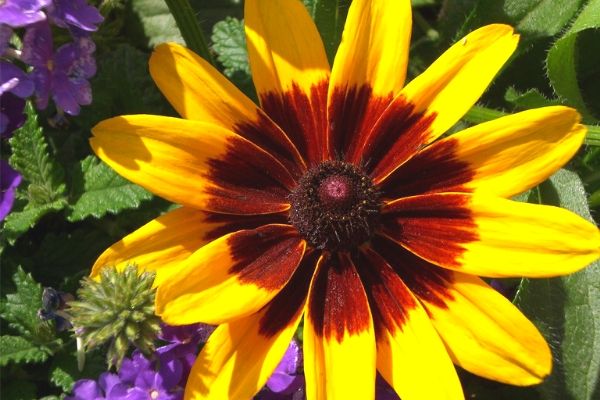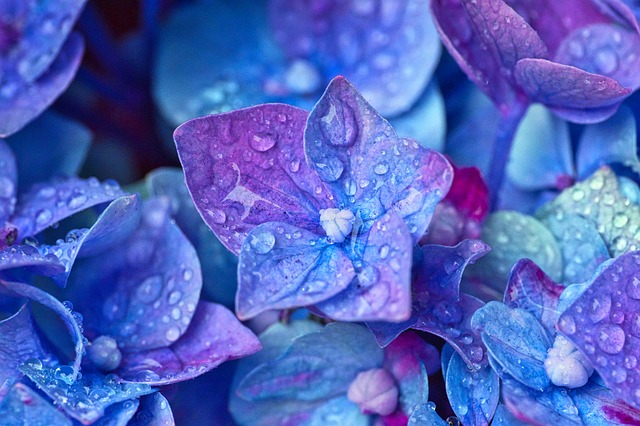Learn about these beautiful summer-blooming perennials that add color and interest to your garden year after year.
Long flowering summer blooms and color is a common gardener goal, but actually reaching that level of beauty and planning can be challenging.
Thinking about which perennials to add to your garden in late winter or early to mid-spring can set your garden up to shine for the coming summer. If you need help planning and garden idea inspo, click here to download your free Garden Planning Ideabook to start generating ideas and mapping out what you should buy to plant where you want in your garden.
Luckily, we have you covered with 10 gorgeous summer blooming perennials to keep your garden vibrant, colorful, and coming back year after year. And, they all have similar care needs, like watering, sun exposure, and more. Pretty cool, right? We think so.
By the way, if you want to create an oasis for all kinds of pollinators, this pollinator garden shopping list would be perfect for you.
This post is based on our podcast Ep. 37 – Flowering Summer Plants Guaranteed to Brighten Up Your Garden
In a hurry? Pin it for later!!
Best Plants For Long Blooming Perennial Gardens
You are looking for plants that keep coming back year after year and have beautiful and unique flowers that last longer than your average flower. Overlapping flower bloom times is can also be a bonus because the contrast of colors and texture can take your garden to a whole new level.
Below are our pics for the top 10 flowering perennials to have in your garden.
- Gloriosa Daisy
- Blanket Flower
- Hosta
- Hydrangea
- Yarrow
- Lavender
- Phlox
- Purple Coneflower
- Shasta Daisy
- Agasatache
Full Sun Perennials
Plants can thrive under many different conditions, including being planted in full sun. This takes a special plant that isn’t afraid of an abundance of sun rays and being out in the open.
Here are two full sun perennial plants that you could plant in your garden for beautiful summer blooms.
Gloriosa Daisy (Rudbekia hirta)

The Gloriosa Daisy (which is a specific strain of Rudbekia hirta) also loves full sun, needs moderate to regular watering, and has flowers that come in yellow, orange, russet, or mahogany, with zoned or bands of different colors in each flower.
- Flowers summer into fall
- Can grow up to 36-48 inches tall and 18 inches wide
- Prefers full sun
- Needs moderate to regular water
- Can be grown by seed to flower first year
- Grows in USDA Hardiness zones 3 to 10
Blanket Flower (Gaillardia aristata)

The Blanket Flower (or Gaillardia aristata or G. x grandiflora) loves full sun, as we just said, needs moderate water, and has flowers that come in warm yellow, bronze, and scarlet. Go to our Blanket Flower plant profile page to find out more.
- Flowers start early to mid summer
- Can grow up to 24-30 inches tall and 24 inches wide
- Prefers full sun
- Needs moderate water
- Can be grown by seed
- Grows in USDA Hardiness zones 3 to 9
Want to learn more about how plants and flowers grow?
Pre-order our book “The First-time Gardener: Growing Plants and Flowers” on Amazon before April 6th and also get 2-FREE bonuses when you pre-order.
Shade-Loving Perennials
Almost all gardens have shady locations where you want to place flowering plants, but what perennial plants do well in shady garden locations that flower during the summer months?
Well, we have two perennial plants for you to consider.
Hostas (Hosta sp.)

Hostas love full and partial shade, needs regular water, and has spike-form flowers that come in different blues and whites.
- Flowers early summer to mid summer
- Can grow up to 36+ inches tall and 48-60 inches wide
- Prefers full to partial shade
- Needs regular water
- Can be grown by dividing or removing plantlets from outer crown edge
- Grows in USDA Hardiness zones 3 to 9
Hydrangea (Hydrangea macrophylla or H. paniculata)

Hydrangea’s, with some species thriving better in partial shade, can take some full sun in cooler climates, but all need regular watering, and has flowers that come in white, pink, red, blue, and purple, with some species having the capability to change their flower color due to the soil pH.
- Flowers can start as early as beginning of summer and then into the fall
- Can grow up to 48-72 inches tall and wide, depending on species
- Prefers partial shade
- Needs regular water
- Grows in USDA Hardiness zones 4 to 9
Drought-Tolerant Perennials
Most gardeners are always looking and keeping their ears open for plants that can take less water or have a tolerance for drought. But what perennial plants flowering during the summer fit this bill?
Well, we have two plants for you that are definitely drought tolerant and are vibrant, profuse summer bloomers!
Lavender (Lavandula angustifolia, L. dentata, and L. stoechas)

Lavender (Lavandula) loves full sun, needs very little water (once established of course), and has flowers that come in deep and soft purple and blue. There are three different main lavender species consisting of English (L. angustifolia), French (L. dentata), and Spanish (L. stoechas), along with other not as well known species. These three are represented here. Go to our Lavender plant profile page to find out more!
- Flowers from beginning of summer into fall
- Can grow up to 48-60 inches tall and wide
- Prefers full sun
- Needs moderate water
- Can be grown by seed or cutting
- Grows, generally, in USDA Hardiness zones 5 to 10 (French 5 to 9 and Spanish 7 to 9)
Yarrow (Achillea millefolium)

Common Yarrow (Achillea millefolium) also loves full sun, needs little to moderate water, and has flowers that come in cream, yellow, pink, and red.
- Flowers starting early summer into late summer and early fall
- Can grow up to 24 inches tall and wide, and there are dwarf varieties
- Prefers full sun
- Needs little to moderate water
- Can be grown by seed or dividing
- Grows in USDA Hardiness zones 4 to 8
Best Perennials for Cut Flowers
This summer you will most likely have all sorts of flowering perennials bursting with color around your garden. But what if you wanted to bring some of that color into your home for cut flowers? What summer flowering perennial plants could you grow and harvest flowers from to bring inside your home?
In general, make your cuts at the flower stems point of attachment to the next stem, then strip the lower stems and leaves off before placing in a vase or container.
Well, we have two great summer flowering perennial plants to harvest for cut flowers from your garden
Agastache (Agastache cana)

These flowers are actually more like mini-flowers on spikes that poke straight up from the lower part of the plant. Stem lengths can vary between different species and varieties, but if you plant then a little closer together than recommended, you can get them to stretch a little more and grow those flower stems longer before you harvest them.
- Flowers during most of summer
- Can grow up to 36-48 inches tall and 24-26 inches wide
- Prefers full sun to partial shade
- Needs moderate water
- Can be grown by seed
- Grows in USDA Hardiness zones 4 to 10
Shasta Daisy (Chrysanthemum maximum)

Shasta daisy flowers can be medium to large, but not as large as a sunflower (unfortunately). Again, planting spaces can be decreased to get a little more stem length on each flower. Make sure to water these regularly if wanting cut flowers so each stem can grow and stretch for that length. Make your stem cuts down close to the either the next flower bud below it coming off the stem or, if none, then down close to but just above the crown of the whole plant. Go to our Shasta Daisy plant profile page to find out more!
- Flowers from late spring into mid and late summer
- Can grow up to 24-48 inches tall and 24+ inches wide
- Prefers full sun
- Need moderate to regular water
- Can be grown from seed and from dividing
- Grows in USDA Hardiness zones 4 to 10
Longest-Blooming Perennials
Phlox (Phlox sp.)

Phlox are considered either flowering annuals or perennials depending on your climate zone.
These beautiful flowers bloom throughout the summer with their pink, purple, cream, red, blue or white flowers. Some even have mixed colors that butterflies cannot resist.
Generally, Phlox:
- Flowers mid to late summer into fall
- Can grow up to 24-inches tall
- Prefers full sun
- Needs regular water
- Can be directly sown
- Grows in USDA Hardiness zones 2-11
Purple Coneflowers (Echinacea purpurea)

Coneflowers are a part of the huge daisy family.
These plants show bright purple and pink bursts of flower color in your garden that butterflies can’t resist. Go to our Coneflower plant profile page to find out more!
In general, purple coneflower:
- Is an herbaceous perennial
- Grows each year from a crown of buds at about soil level and then dies back to the ground in the mid-fall to winter
- Blooms in the summer
- Can grow anywhere from 24-36 inches high
- Prefers full sun
- Needs moderate water
- Can be directly sown
- Grows in USDA hardiness zones 3-9.
Summer-Blooming Flower Books
If you’re looking for further educational resources, these books below are the perfect reference book to educate you about butterflies.
Both of these books can be found on Amazon at the links below.
American Horticultural Society Encyclopedia of Plants and Flowers


Floret Farm’s Cut Flower Garden: Grow, Harvest, and Arrange Stunning Seasonal Blooms


Summer Garden Plants Conclusion
Now that you have these ten best long blooming summer perennials to choose from, what are you going to do? Definitely make your list, sketch them out, and think about the different colors to mix and match in your garden.
Have fun and make sure to enjoy the summer weather.
Now we want to hear from you!
Did you find the right plant, or do you need more options?
Let us know by leaving a quick comment below!
P.S. Find us on Pinterest, Twitter, Facebook, and Instagram so you don’t miss a thing!
* Spokengarden.com is a participant in the Amazon Services LLC Associates Program, an affiliate advertising program designed to provide a means for sites to earn advertising fees by advertising and linking to Amazon.com
Learn about these beautiful summer-blooming perennials that add color and interest to your garden year after year.




